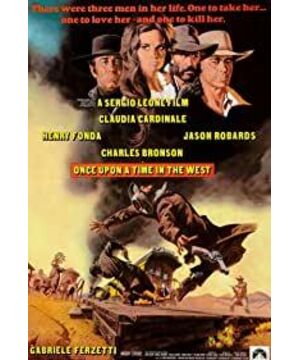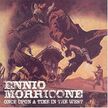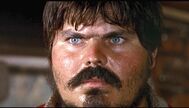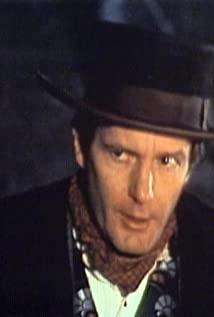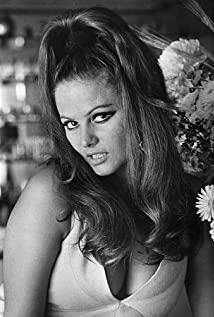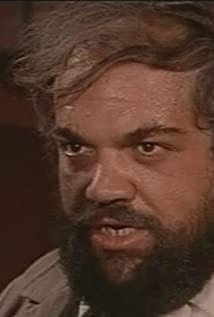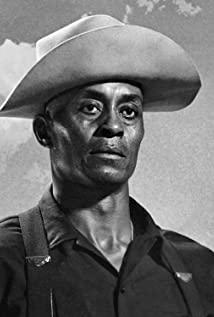"Once Upon a Time in the West" is not the best among Leonney's works. The previous "The Good, the Good and the U.S." and the latter "Once Upon a Time in America" are all above it. It's not that there is a quality difference between the three films. It means that the film has its own choices in terms of style, story and structure, which makes the film slightly different in texture and details.
"Once Upon a Time in the West" chooses a multi-angle and multi-protagonist non-linear narrative structure, and uses a group-like narrative technique to outline a period of history. In a narrow sense, it is telling a story about confrontation, and in a broad sense, it is showing a period of history.
The film is also quite special in style. Compared with the "Funker Trilogy" completed earlier by the director, the difference is not general.
The biggest feeling for me from the "Funker" series is actually the rhythm (processing), which is bright, crisp and dynamic. The story line is also simple and clear, so whether it is the first version of "Red Dead Redemption" adapted from Akira Kurosawa's "Intentional Stick", or the final masterpiece of the trilogy "The Good, the Good and the Bad", although the number of main characters has changed, from The first one became multiple later. The story became more complicated, but it did not have much impact on the rhythm of the film. The story style also continued the narrative style of the early western films, focusing on heroes who eradicate evil and rob the rich and help the poor. , Classic enough, but too conservative, without much breakthrough.
Western films themselves have encountered this kind of bottleneck. The subject matter is too single, the style is old, and the form is conservative. They are caught in the same embarrassing situation as Hollywood musicals. The era of musicals and dances created by the latter with comedy as the main genre has passed. Old-school genre films The dilemma of transformation has become a concern of people.
Leone’s usual Italian technique is probably the most interesting change in the Western genre, but this change only changes the angle of filming, not the essence.
Dramas such as action and chasing accounted for much less in the film than in previous westerns. The focus is on character confrontation and psychological games, which draws external conflicts to internal contradictions and strengthens the role. The three-dimensional sense of itself makes the characters stand out, but the story routine has not changed, and the style will naturally not change.
In fact, style is the key to resurrecting a type.
This is why I mentioned that "Once Upon a Time in the West" is special in style compared to "The Red Guard".
When I first wrote genre films, I liked to mention the concept of “genre hybrid” because I didn’t realize the importance of style at the time, unless you have a strong feeling for a certain genre, but you will have a deeper understanding of it. , I did lack this kind of awareness at the beginning.
However, revisit the development process of "Western", from the earliest ten minutes of "The Great Train Robbery" (1903), to the golden age classic "Guanshan Feidu" (1939), and then to the relaunched "Wolf with the Wolf" after the decline. "Dancing Together" (1990), in the course of a century-long development, the core of "Western Films" has also gradually moved from genre to style.
The core of "Western films" is to present a rule, not a pattern. For example, in "The Great Train Robbery", the robbers rob the train and the mounted police finally annihilate the robbers. In "Dancing with Wolves", Indian The survival rules followed by humans and whites; the moral code of "Red Dead Redemption" is the same. The emergence of these rules not only rationalizes the protagonist’s behavior, but also mainstreams and standardizes the core of the story, which is more adaptable to the heroic style. Role modeling.
For example, Joe, the protagonist in "Red Dead Redemption", is a typical hero. The use of core rules allows the hero to show his personal charm even if he is out of the story, and the presentation of the story will make the character's image more full and inspiring. Convinced, after all, a sharpshooter with a sense of justice and responsibility, no one will hate him.
In the past, the most important genre we thought of as the existence of "Westerns" actually benefited more from the details, such as the aforementioned actions, chasing scenes, fast-paced shots, profound close-ups, etc. Wait, in the last scene of "The Train Robbery" at the beginning of the last century, when the character raised his gun to the big screen, it was the moment when the creator deliberately broke the fourth wall between the movie and the audience. The ups and downs in the previous story The robbery drama ended. The scene continued in the fixed shot of the gangster falling to the ground in the distant view, and was suddenly interrupted by the sudden close-up of the character.
And this is exactly the rule followed in "Westerns". Here, situational dialogues are not rare, and there are especially many changes in rhythm. The hearty tavern melee in "The Hateful Eight", you can see the human blood. Zhang, clap your hands and applaud, there is only one rule they believe in, that is: live.
The word genre is just a classification for the movie pipeline. It is not inevitable, but only represents a certain aspect that we like, or that the movie wants to express deliberately. Nowadays, "types are mixed." There are more and more films, which makes us more confused about the definition of genre films, such as suspense, science fiction type "Black Hole Frequency", western, romance, story type "Brokeback Mountain", etc., all of this type Although the film has a fusion of genres, it does not affect the matching of the plot and style of the film, nor does it affect the quality of the film itself.
But the style is different.
The style is the same as the genre, and there are fusions of "style", but such fusions will destroy the unity of the movie and destroy the film's texture, so it is generally difficult to see "style fusion" films.
But such films are only few, not nonexistent, and such films can be selected separately for detailed analysis.
We will wait until "Once Upon a Time in America" to elaborate on this point.
Going back to this "Once Upon a Time in the West", in fact, the most impressive thing is the style. It is still the same as I expected. The film is traditional in the story. It tells a classic confrontation between good and evil. The protagonist is a mysterious sharpshooter. The villain is a railroad tycoon. The story is told around a battle for land. It starts with a large panoramic gun battle and ends with a distinctive train station (the opening of the railway), which is very epic. At the same time, the film Middle is also one of my favorite clips.
Such a traditional story of the confrontation between good and evil is actually lacking in highlights, but because of the change in the story's technique, the film is energized, which is different from other "western films."
This change is reflected in the style.
It is difficult for us to explain in detail how this style is realized and worked, but it is reflected in the film, the visual expression makes the style more iconic, clearer and more intuitive, and does not require too much language to repeat this change. .
There are many scene scheduling techniques such as fixed shots, panoramic views, partial close-ups, light and shadow relationships, and depth of field dimensions. You may not realize them if they are too many, but once they are missing, you can feel the difference between the front and the back very strongly. What's more, grammatical work such as shot editing further strengthens the subjective consciousness of the film and fully embodies the value of the film as an ideological text created by the creator.
In this way, type is only a tool, and style can show value and difference.
From the traditional thinking that emphasizes plot and light style in the past, it has changed to the image grammar that uses style to tell stories. The role of images in movies is becoming more and more important. The past narrative mode that relied on dialogue and action to promote the plot has not been abandoned. But the narrative model itself is more diversified, the image has a higher status, and plays the main role in the narrative, and at the same time, it can also provide a situational rendering for the film.
This rendering focuses on the epic shaping of the film.
Why do I say in the title that this film is an epic film?
Most of it stems from my knowledge of the style of the film. While creating a narrative mode with large-scale scenes and characters, the scenes and characters themselves are also involved in the narration. If you look at the narrative mode from the story, the narrative mode is often the era. Sexual, because the contextual style will affect the story of the movie, we can think of the movie as a story that takes place in a small place, but under the rendering of the style, the story has a sense of the times and is labeled as the times. Also cheerful.
Looking at the narrative mode from the outside of the story, we will only see how this mode works and how the style matches the story. We may not realize the necessity of the sense of the times relative to the story, so sometimes it is objective. Cognition is often more accurate than subjective cognition. If you can try to think about a problem in another way, it is likely to come up with a new solution.
As the story background of "Once Upon a Time in the West", the era itself is not very prominent, but the strong style of the movie has confirmed the label of the era, and brought this era of "Western Development" story to the fore.
Epic is nothing more than a legend that allows a hero to step onto the stage from behind the scenes, and belong to the behind the scenes. Precisely in this story, there is also such a purely personal hero, and there is also a mighty battle scene. At the same time, because of the blessing of the times, the epic has finally become a fact.
Moreover, this film is also Leon’s last western film. From the cowboy melee at the beginning of the film to the end of the end of the film, the perfect opening of the "Western Development" symbolizes the end of one era and the beginning of another. In the end, the cowboys will also retreat behind the scenes, and new heroes will appear. This is inevitable and cannot be changed.
"Western" seems to be in decline, yes, it retreated to the back of the scene along with this classic era, becoming a dead type, no one mentions it anymore.
But from another angle, will he be reborn with a whole new look?
Nowadays, "Old Nowhere", "The Hateful Eight", "Dancing with Wolves"... The older and more new Westerns are emerging, they are very different from the old-school Westerns, without personal heroes. Without ethics, they have also lost the happy ending. But on the other hand, they are creating everything in their own way. They have their own rules, more mature styles and wonderful stories. They are creating their own legend.
"Westerns" are immortal!
View more about Once Upon a Time in the West reviews


